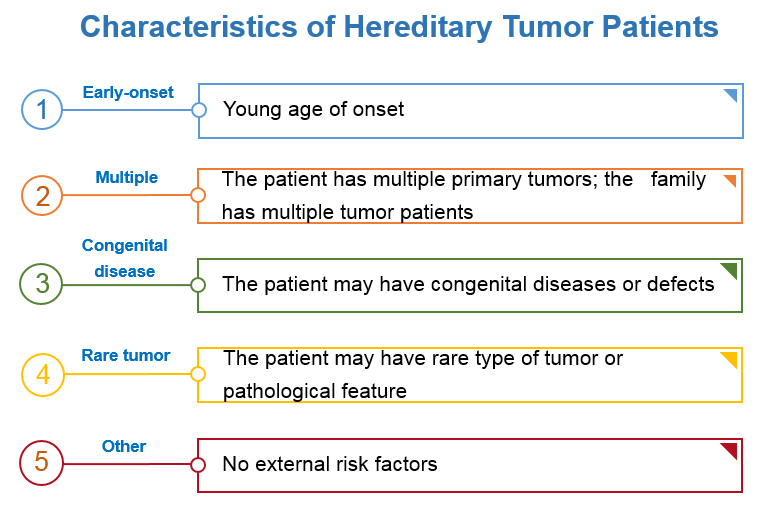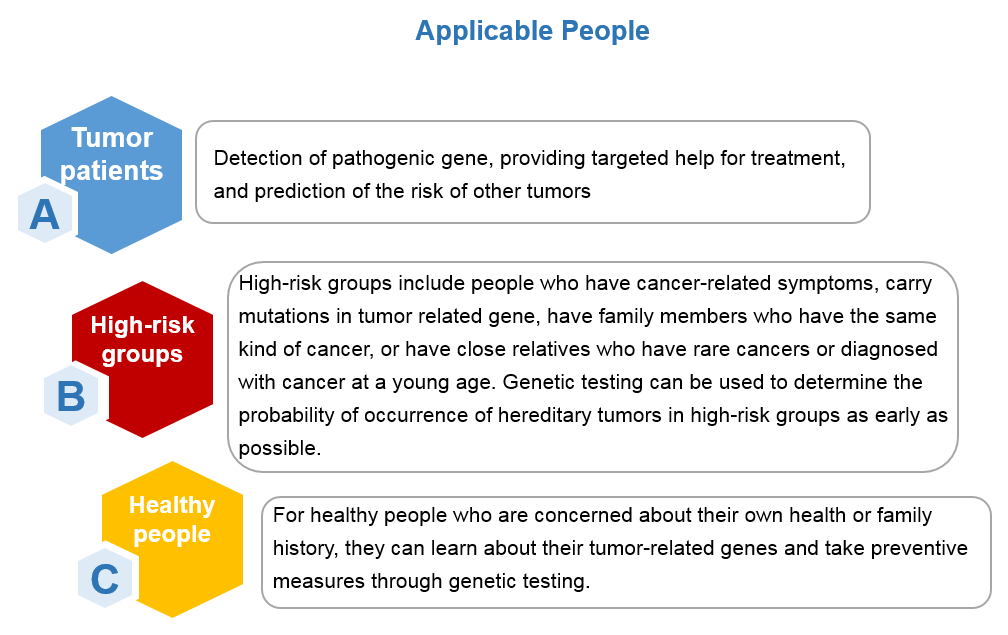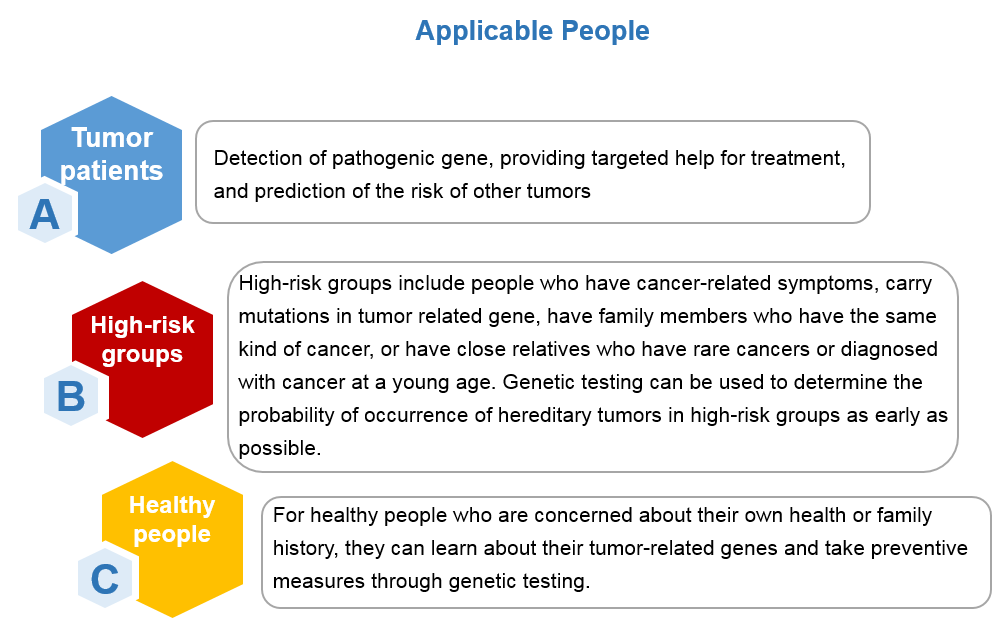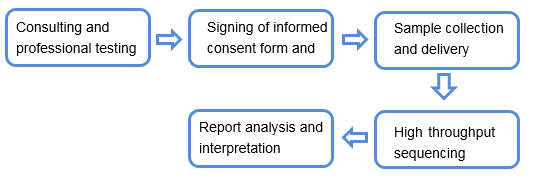Detection of Common Types of Hereditary Cancer
Detection of Common Types of Hereditary Cancer
About 5-10% of tumor patients have familial genetic predisposition, which is passed directly to the offspring by the parental generation, such tumors are pathologically known as hereditary tumors. People who carry genetic mutations in hereditary tumor susceptibility genes have a higher risk of developing tumors than normal people, and the probability that the previous generation passes the mutations of the pathogenic genes down to the offspring is about 50%, which increases the rate of cancer occurrence in future generations. Genetic testing of hereditary tumor can effectively help to develop more targeted prevention and control measures.


|
Common Types of Hereditary Tumors |
|
|
Male (15) |
Female (16) |
|
Prostate cancer |
Breast cancer |
|
Colorectal cancer |
Ovarian cancer |
|
Gastric cancer |
Endometrial cancer |
|
Pancreatic cancer |
Colorectal cancer |
|
Kidney cancer |
Gastric cancer |
|
Thyroid cancer |
Pancreatic cancer |
|
Parathyroid cancer |
Kidney cancer |
|
Paraganglioma |
Thyroid cancer |
|
Pheochromocytoma |
Parathyroid cancer |
|
Retinoblastoma |
Paraganglioma |
|
Breast cancer |
Pheochromocytoma |
|
Melanoma |
Retinoblastoma |
|
Multiple osteochondroma |
Melanoma |
|
Multiple endocrine neoplasia |
Multiple osteochondroma |
|
Neurofibromatosis |
Multiple endocrine neoplasia |
|
|
Neurofibromatosis |

Sample Requirement
Blood
- Whole blood: 5 mL of peripheral blood, stored in special anticoagulation tube, transported in ice bag (4℃) (the blood cannot be in direct contact with the ice bag), delivered to the laboratory within 3 days.
- Plasma and blood cells: collect the supernatant and sediment by centrifuging (4℃, 1600g, 10 min) the whole blood, then centrifuge (4℃, 16000g, 10 min) the supernatant to get new supernatant. After separation, get no less than 4 mL plasma and blood cells, which shall be sealed with a sealing membrane and transported to the laboratory in dry ice.
Tissue
- Fresh tissue: tumor tissues (≥50mg) and adjacent non-tumor normal tissues(≥25mg), transported to the laboratory in dry ice after pre-processing (transportation at 4℃ may lead to unqualified sample quality).
- Paraffin-embedded tissue: fresh paraffin sections (10 ~), normal tissue paraffin sections are needed for reference, transported at room temperature.
DNA
- DNA (≥3μg), OD 260/280: 1.8~2.0, OD 260/230: 1.8~2.0
- cfDNA (≥500ng), stored in 1.5mL centrifuge tube, sealed with a sealing membrane and transported to the laboratory in dry ice.
Saliva
Rinse your mouth with clear water, collect at least 3mL saliva according to saliva sampling instructions, tighten the cover of the sample tube and shake the liquid evenly. The sample tube can be transported at room temperature.
Service Process

- 上一篇:Colorectal Cancer
- 下一篇:
